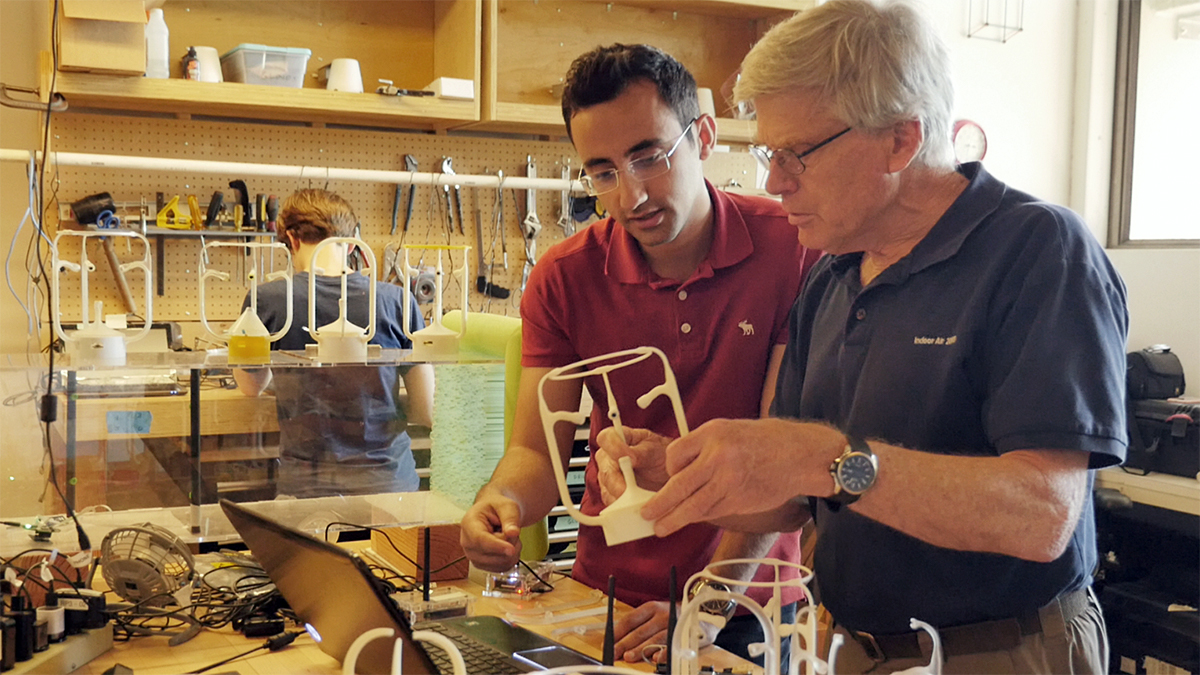Low-cost sensor systems to monitor and optimize HVAC systems for energy and comfort.
Status: Completed
Funding Sources: California Energy Comission EPIC Industry In-Kind Support CBE Energy Consortium
Project Objective
Develop low-cost, accurate and compact airflow sensors for measuring air speeds in rooms, and volumetric air flow in HVAC systems, using new microelectromechanical systems (MEMS) technologies.
Significance to Industry
The sensing and control of airflow in buildings has tremendous energy implications. Airflow within rooms, important for environmental control in high-performing buildings and in labs, hospitals, and data centers, is currently almost never monitored because of the expense, power draw, directional sensitivity, and fragility of existing airspeed sensors. Air flow in ducts, and in other HVAC equipment such as air handling units, outdoor air measurement stations, variable air volume boxes, and diffusers, is currently obtained by damper position, pressure sensors, or hot-wire sensors, each of which are commonly out of calibration due to fouling, drift, or incorrect commissioning.
The result is that existing building control systems cannot predict energy flows accurately. Of the four variables that affect an indoor environment (temperature, humidity, radiant temperature, and air movement), air movement is the only one that cannot now be easily monitored in interior spaces and HVAC systems. The lack of effective airspeed and airflow monitoring impacts indoor comfort and ventilation, indoor air quality, occupant health and safety, and about half of the energy used in HVAC (11% of California’s total energy).
Research Approach
An interdisciplinary team from industry and academia will develop and test new ultrasonic airspeed sensors, applying fundamentally new MEMS technologies originally developed for 3D rangefinding.
The team expects the new sensors to be disruptively inexpensive ($20-$100 retail) and sophisticated, with accuracy to equal or exceed that of any alternative airflow sensing technology. The devices will be inexpensive because MEMS enables batch fabrication of thousands of sensors (this is what allows smartphones to incorporate numerous sensors including microphones, gyroscopes, and accelerometers.) The airflow sensors will be able to operate on a battery for years and communicate wirelessly.
The room version of the hardware may be suspended from the ceiling and will orient and even locate itself. Because its small size it can also be unobtrusively mounted from workstation surfaces. The duct version will be differently configured and be able to measure volumetric flows in rectangular and circular ducts without need for calibration, and with minimal insertion into the airstream.
The research team will prepare and publish design data, performance specifications and generic control sequences for these systems. The benefits in terms of energy, comfort and health will then be established through laboratory and field testing by this project team and other industry collaborators. We see such documentation as essential for jump-starting the market for sensor manufacturers. If the results are as compelling as we envision, we will also target the findings to the standards committees controlling energy and environment in buildings such as ASHRAE and Title-24.
Publications and Reports
Ghahramani, A., P. Galicia, D. Lehrer, Z. Varghese, Z. Wang, and Y. Pandit. 2020. Artificial Intelligence for Efficient Thermal Comfort Systems: Requirements, Current Applications and Future Directions. Frontiers in Built Environment. April. https://doi.org/10.3389/fbuil.2020.00049 https://escholarship.org/uc/item/75j1m967
Ghahramani, A., M. Zhu, R. Przybyla, M. Andersen, P. Galicia, T. Peffer, H. Zhang, and E. Arens. 2019. Measuring air speed with a low-power MEMS ultrasonic anemometer via adaptive phase tracking. IEEE Sensors Journal, 1-10. June. https://escholarship.org/uc/item/8kf1c11k
Arens, E., H. Zhang, W. Pasut, Y. Zhai, T. Hoyt and L. Huang. 2013. Air movement as an energy efficient means toward occupant comfort, Final report for the California Air Resources Board. http://escholarship.org/uc/item/2d656203
Andersen, M.P., and D. Culler, 2014. System design trade-offs in a next-generation embedded wireless platform. SenSys14, Nov 3-6, Memphis http://www.eecs.berkeley.edu/Pubs/TechRpts/2014/EECS-2014-162.pdf

